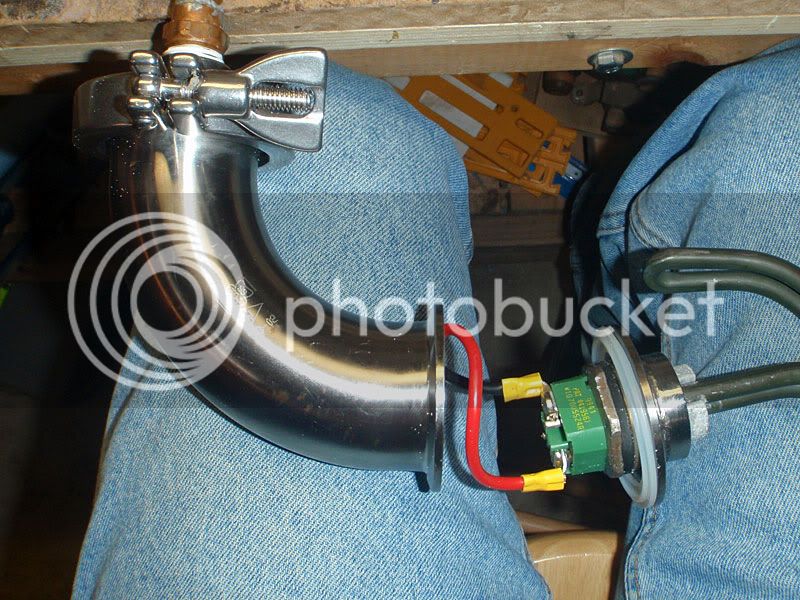I finally moved into a house and now my little hide in the closet because it's ugly brewery is getting it's own space in the garage. Down here in South Texas the washer and dryer is also in the garage. I figure this opens me up to the possibility of going electric without installing a breaker and new outlet. Unfortunately I won't be able to use the dryer when I'm brewing, but I'm ok with that.
I'm a broke graduate student but safety comes first. Here is my current idea. It sounds fine to me but I would like those that have been in the game a bit longer to help me find its flaws. I want to use the stick on automatic to bring my up hlt water to strike temp. After mashing I will transfer the stick to the bk and switch it to manual for my boil. Right now I have 3 pots so I don't mess with recirculation or anything like that.
I will be following the other heat stick examples I've found in the forums (The ultimate heat stick by air balancer being the main one) with a few modifications.
I want to install a small controller box (PID, SSR, and all the goodies) on the end of the stick.
The heat element is at the bottom. It threads into a stainless elbow. A copper pipe is soldered onto the elbow and goes to the top of the kettle. It meets another elbow that rests on the lip of my keggle. That then feeds into my controller box. Out of the controller box I have my 10/3 wire going to my 240v dryer receptacle. The temperature probe will run into another smaller copper pipe that will follow the larger one into the keggle.
Does this all make sense and does anyone see any problems with it?
Thanks in advance for all your help. These forums have helped me a lot during the past four years of brewing.

Heating element - Camco Mfg 5500W 240V Ripp Element
Also, I was thinking about this package. Will that do the job or should I order through Auber?
I'm a broke graduate student but safety comes first. Here is my current idea. It sounds fine to me but I would like those that have been in the game a bit longer to help me find its flaws. I want to use the stick on automatic to bring my up hlt water to strike temp. After mashing I will transfer the stick to the bk and switch it to manual for my boil. Right now I have 3 pots so I don't mess with recirculation or anything like that.
I will be following the other heat stick examples I've found in the forums (The ultimate heat stick by air balancer being the main one) with a few modifications.
I want to install a small controller box (PID, SSR, and all the goodies) on the end of the stick.
The heat element is at the bottom. It threads into a stainless elbow. A copper pipe is soldered onto the elbow and goes to the top of the kettle. It meets another elbow that rests on the lip of my keggle. That then feeds into my controller box. Out of the controller box I have my 10/3 wire going to my 240v dryer receptacle. The temperature probe will run into another smaller copper pipe that will follow the larger one into the keggle.
Does this all make sense and does anyone see any problems with it?
Thanks in advance for all your help. These forums have helped me a lot during the past four years of brewing.

Heating element - Camco Mfg 5500W 240V Ripp Element
Also, I was thinking about this package. Will that do the job or should I order through Auber?




